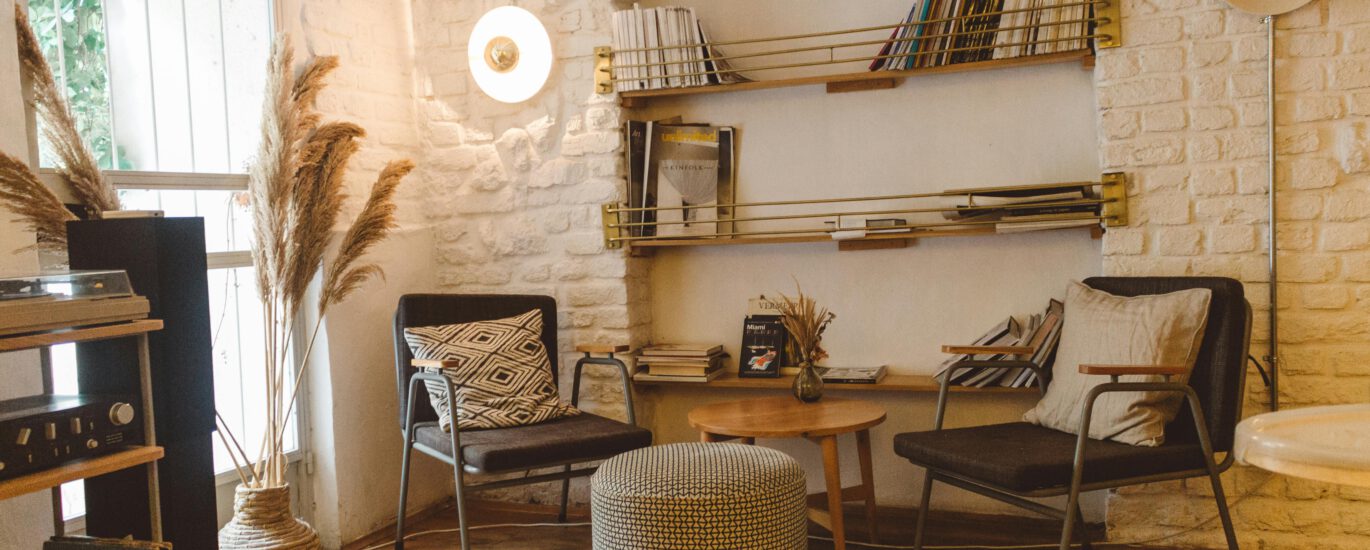Table of Contents
ToggleWhy You Don’t Need to Move Abroad to Experience True Language Immersion at Home
“I wish I could move to Spain to learn Spanish properly.” “If only I could live in France for a year, I’d be fluent.” “Real language learning only happens when you’re surrounded by native speakers.”
These are some of the most common excuses language learners make for their lack of progress. While language immersion abroad is undoubtedly effective, it’s not the only path to fluency—and it’s certainly not accessible to everyone.
The truth is, you can create powerful language immersion at home that rivals the effectiveness of living abroad. With today’s technology and the right strategies, your living room can become your personal language laboratory, your smartphone can connect you with native speakers worldwide, and your daily routine can be transformed into a constant learning experience.
Home language immersion isn’t just a consolation prize for those who can’t travel—it’s often more effective than traditional abroad experiences because you have complete control over your learning environment, pace, and focus areas.
Let’s explore how to build your own language immersion bubble that will accelerate your progress faster than you ever thought possible.
What Real Language Immersion Actually Means
Beyond Just “Being Around the Language”
Many people misunderstand what makes immersion effective. It’s not simply being in a country where your target language is spoken. True language immersion involves:
Comprehensible Input: Constant exposure to language that’s slightly above your current level
Meaningful Interaction: Using the language for real purposes, not just practice
Emotional Engagement: Connecting with content that genuinely interests you
Necessity-Driven Learning: Creating situations where you must use the language to achieve goals
Why Home Immersion Can Be Superior
Controlled Environment: You can adjust difficulty levels, focus on specific skills, and eliminate distractions
Personalized Content: Choose topics that genuinely interest you rather than random conversations
Consistent Quality: Access to high-quality native content rather than potentially poor local accents or dialects
Cost-Effective: No travel, accommodation, or visa expenses
Flexible Timing: Learn at your optimal times rather than adapting to local schedules
Building Your Home Immersion Environment: The Complete Setup
1. Transform Your Physical Space
Create Language Zones in Your Home:
- Label everything with sticky notes in your target language
- Change your phone, computer, and TV settings to your target language
- Put up maps, flags, and cultural items from countries where your language is spoken
- Create a dedicated study corner with materials in your target language
Kitchen Immersion:
- Label appliances, ingredients, and cooking utensils
- Follow recipes in your target language
- Watch cooking shows from your target culture
- Listen to podcasts while preparing meals
Bathroom Learning:
- Put vocabulary lists on the mirror
- Practice pronunciation while brushing teeth
- Listen to language podcasts during your morning routine
- Use language learning apps during downtime
2. Digital Immersion Strategy
Social Media Transformation:
- Follow accounts in your target language (news, entertainment, hobbies)
- Join Facebook groups and Reddit communities in your target language
- Change your social media interface to your target language
- Comment and interact in your target language
Entertainment Immersion:
- Netflix/streaming services in your target language with target language subtitles
- YouTube channels by native speakers about your interests
- Podcasts during commutes and exercise
- Music playlists exclusively in your target language
- Video games with language settings changed
News and Information:
- Set your target language news site as your homepage
- Subscribe to newsletters in your target language
- Follow weather, sports, and current events in your target language
- Use Wikipedia in your target language for research
3. Daily Routine Integration
Morning Immersion Routine:
- Wake up to radio in your target language
- Check weather and news in your target language
- Practice speaking affirmations or daily goals aloud
- Listen to language podcasts during breakfast
Commute Learning:
- Audio lessons during driving or public transport
- Language exchange voice messages
- Music and podcasts in your target language
- Mental translation exercises of surroundings
Evening Wind-Down:
- Watch shows or movies in your target language
- Read books or articles before bed
- Journal in your target language
- Practice gratitude exercises in your target language
The 30-Day Home Immersion Challenge
Week 1: Foundation Building
Days 1-3: Set up your physical and digital environment
Days 4-7: Establish morning and evening routines in your target language
Week 2: Content Consumption
Days 8-10: Find 5 YouTube channels you genuinely enjoy
Days 11-14: Discover podcasts and music that match your interests
Week 3: Active Engagement
Days 15-17: Start commenting on social media in your target language
Days 18-21: Begin voice messaging with language exchange partners
Week 4: Real-World Application
Days 22-24: Order food or shop online in your target language
Days 25-28: Have video calls with native speakers
Days 29-30: Evaluate progress and plan next month
Advanced Home Immersion Techniques
1. The Monologue Method
Spend 10 minutes daily talking to yourself about your day, plans, or thoughts in your target language. Record yourself to track improvement.
2. The Translation Challenge
Translate your internal monologue throughout the day. When you think “I’m hungry,” immediately think the equivalent in your target language.
3. The Cultural Deep Dive
Choose one aspect of your target culture each week (food, history, sports, politics) and consume only content about that topic in your target language.
4. The Virtual Travel Experience
“Visit” different cities through virtual tours, local news, and cultural content, all in your target language.
5. The Professional Immersion
If possible, incorporate your target language into your work through international colleagues, foreign clients, or industry content.
Technology Tools for Maximum Immersion
Essential Apps and Platforms
- Language Exchange: HelloTalk, Tandem, Speaky
- Content Consumption: Netflix Language Learning, Language Learning with YouTube
- News and Reading: News in Slow [Language], Readlang
- Vocabulary Building: Anki, Memrise, Quizlet
- Speaking Practice: Speechling, ELSA Speak, Sounds
Browser Extensions
- Language Immersion: Toucan, Language Learning with Netflix
- Translation Help: Google Translate, Reverso Context
- Reading Assistance: Readlang, LingQ browser extension
Smart Home Integration
- Set Alexa/Google Home to your target language
- Use voice commands for daily tasks
- Ask for weather, news, and information in your target language
Overcoming Common Home Immersion Challenges
Challenge 1: “I Don’t Understand Anything”
Solution: Start with content designed for learners, then gradually move to native content. Use subtitles in your target language, not English.
Challenge 2: “I Feel Isolated”
Solution: Join online communities, attend virtual events, and schedule regular video calls with language exchange partners.
Challenge 3: “I Keep Switching Back to English”
Solution: Set specific “English-free” hours each day. Start with 30 minutes and gradually increase.
Challenge 4: “I’m Not Making Progress”
Solution: Track your progress with weekly recordings, vocabulary counts, and comprehension tests.
Challenge 5: “It’s Too Overwhelming”
Solution: Implement changes gradually. Add one new immersion element each week rather than everything at once.
Measuring Your Home Immersion Success
Weekly Progress Indicators
- Hours of target language exposure
- New vocabulary acquired
- Conversations initiated
- Content understood without translation
- Comfort level speaking aloud
Monthly Assessments
- Record yourself speaking for 5 minutes about a random topic
- Take a comprehension test with native content
- Have a 30-minute conversation with a native speaker
- Write a 500-word essay about your month
Quarterly Evaluations
- Compare recordings from 3 months ago
- Attempt to consume content that was too difficult before
- Engage in complex discussions about abstract topics
- Assess whether you’re thinking in your target language
Creating Accountability in Your Home Immersion
Find an Immersion Buddy
Partner with someone learning the same language and check in weekly about your immersion activities.
Join Online Communities
Participate in language learning forums, Discord servers, and social media groups focused on your target language.
Set Public Goals
Share your immersion goals on social media and update followers on your progress.
Work with a Tutor
Schedule weekly sessions with an online tutor to practice what you’ve learned through immersion.
The Long-Term Home Immersion Lifestyle
Making It Sustainable
- Choose content you genuinely enjoy, not just educational material
- Allow for flexibility and breaks to prevent burnout
- Celebrate small wins and progress milestones
- Continuously adjust your approach based on what works
Expanding Your Immersion
- Connect with local communities that speak your target language
- Attend cultural events and festivals
- Cook traditional foods while following recipes in your target language
- Plan future trips to countries where your language is spoken
Final Thoughts: Your Home Is Your Language Laboratory
Creating effective language immersion at home isn’t about perfectly replicating the experience of living abroad—it’s about building a personalized, sustainable, and engaging environment that accelerates your language learning journey.
The beauty of home immersion lies in your complete control over the experience. You can focus on areas where you need the most improvement, consume content that genuinely interests you, and progress at your own pace without the stress and expense of international travel.
Remember, consistency beats intensity. A well-designed home immersion environment that you use daily will be far more effective than sporadic intensive study sessions. Start small, build gradually, and watch as your target language becomes a natural part of your daily life.





